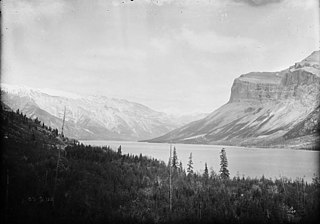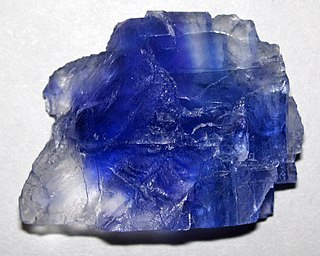Notes
- ↑ "Ashton Embry". Geological Survey of Canada— Directory of Geoscience Expertise. Retrieved 17 April 2012.[ permanent dead link ]
- 1 2 3 "Ashton F. Embry". bookfinder.com. Retrieved 17 April 2012.
Ashton F. Embry (born August 13, 1946) is a Canadian research scientist at the Geological Survey of Canada.
Embry is a graduate of the University of Manitoba, who received a PhD in stratigraphy from the University of Calgary in 1976. He first did field work in the Arctic Islands of Canada in 1969 and has studied the geology of this area ever since, establishing stratigraphy, sedimentology and petroleum geology of the Mesozoic succession of the Sverdrup Basin Magmatic Province. The fossil sarcopterygian fish Laccognathus embryi of the Devonian was named in his honour. [1]
{{cite journal}}: CS1 maint: location (link) On line=7 April 2003The Muskeg Formation is a geologic formation of Middle Devonian (Givetian) age in the Western Canada Sedimentary Basin. It extends from the plains of northwestern Alberta to northeastern British Columbia, and includes important petroleum and natural gas reservoirs in the Zama lake and Rainbow Lake areas of northwestern Alberta.
The Exshaw Formation is a stratigraphic unit in the Western Canada Sedimentary Basin. It takes the name from the hamlet of Exshaw, Alberta in the Canadian Rockies, and was first described from outcrops on the banks of Jura Creek north of Exshaw by P.S. Warren in 1937. The formation is of Late Devonian to Early Mississippian age as determined by conodont biostratigraphy, and it straddles the Devonian-Carboniferous boundary.

The Palliser Formation is a stratigraphic unit of Late Devonian (Famennian) age in the Western Canada Sedimentary Basin. It is a thick sequence of limestone and dolomitic limestone that is present in the Canadian Rockies and foothills of western Alberta. Tall cliffs formed of the Palliser Formation can be seen throughout Banff and Jasper National Parks.
The Beaverhill Lake Group is a geologic unit of Middle Devonian to Late Devonian age in the Western Canada Sedimentary Basin that is present in the southwestern Northwest Territories, northeastern British Columbia and Alberta. It was named by the geological staff of Imperial Oil in 1950 for Beaverhill Lake, Alberta, based on the core from a well that they had drilled southeast of the lake, near Ryley, Alberta.

The Elk Point Group is a stratigraphic unit of Early to Middle Devonian age in the Western Canada and Williston sedimentary basins. It underlies a large area that extends from the southern boundary of the Northwest Territories in Canada to North Dakota in the United States. It has been subdivided into numerous formations, number of which host major petroleum and natural gas reservoirs.
The Alexo Formation a stratigraphic unit of Late Devonian age. It is present on the western edge of the Western Canada Sedimentary Basin in the central Rocky Mountains and foothills of Alberta. The formation consists primarily of dolomite. It is locally fossiliferous and includes remains of marine animals such as brachiopods and conodonts.

The Cairn Formation is a geologic formation of Late Devonian (Frasnian) age in the Western Canada Sedimentary Basin. It was named for the Cairn River near its junction with the Southesk River in Jasper National Park by D.J. McLaren in 1955.
The Mount Hawk Formation is a stratigraphic unit of Late Devonian age. It is present on the western edge of the Western Canada Sedimentary Basin in the Rocky Mountains and foothills of Alberta. It consists primarily of limestone and mudstone, and was named for Hawk Mountain in Jasper National Park by R. de Wit and D.J. McLaren in 1950.
The Flume Formation is a geologic formation in the Western Canada Sedimentary Basin in Alberta, Canada. It was deposited as an extensive carbonate platform along the western edge of the basin during Late Devonian (Frasnian) time and the reefs of the Cairn Formation subsequently developed on it.
The Ghost River Formation is a now-abandoned name for a geologic formation that encompassed Cambrian to Middle Devonian strata in the Rocky Mountains of southwestern Alberta, Canada. It was established by C.D. Walcott in 1923. The name was abandoned because of uncertainty about the age of the strata that it encompassed.
The Perdrix Formation is a geologic formation of Late Devonian (Frasnian) age in the Western Canada Sedimentary Basin. It named for Roche à Perdrix in Jasper National Park, Alberta, by P.E. Raymond in 1930. It includes fossils of marine animals.
The Southesk Formation is a stratigraphic unit of Late Devonian age. It is present on the western edge of the Western Canada Sedimentary Basin in the Rocky Mountains and foothills of Alberta and southeastern British Columbia. It was named for the Southesk River in Jasper National Park by D.J. McLaren in 1955.
The Skoki Formation is a stratigraphic unit of Early to Middle Ordovician age that is present on the western edge of the Western Canada Sedimentary Basin in the Canadian Rockies of Alberta and British Columbia. It was named for Skoki Mountain near Lake Louise in Banff National Park by Charles Doolittle Walcott in 1928. The Skoki Formation is fossiliferous and includes remains of brachiopods and other marine invertebrates, as well as conodonts and oncolites.
The La Loche Formation is a geologic formation of early Middle Devonian (Eifelian) age in the Western Canada Sedimentary Basin. It is present in northeastern Alberta and northwestern Saskatchewan and was first described by A. W. Norris in 1963, who named it for a Roman Catholic Mission at Lac La Loche. Its type section is located at Contact Rapids on the Clearwater River in Saskatchewan, northwest of Lac La Loche. It is not fossiliferous.
The Kananaskis Formation is a geologic formation that is present on the western edge of the Western Canada Sedimentary Basin in the southern Canadian Rockies of western Alberta. Named after the Kananaskis Range near Banff, it was deposited during the Late Pennsylvanian sub-period of the Carboniferous period. Some of its strata host fossils of marine invertebrates.

The Pika Formation is a stratigraphic unit of Middle Cambrian age that is present on the western edge of the Western Canada Sedimentary Basin in the Canadian Rockies of Alberta and British Columbia. It was named for Pika Peak near Lake Louise in Banff National Park by C.F. Deiss in 1939. It is fossiliferous and preserves several genera of trilobites. Outcrops of the Pika Formation can be seen in Banff and Jasper National Parks.
The Maligne Formation is a stratigraphic unit of Late Devonian (Frasnian) age. It is present on the western edge of the Western Canada Sedimentary Basin in the Rocky Mountains and foothills of Alberta and British Columbia. It consists primarily of argillaceous limestone and calcareous mudstone, and was named for the Maligne River in Jasper National Park by P.W. Taylor in 1957.
The Borsato Formation is a stratigraphic unit of Late Devonian (Frasnian) age. It is present on the western edge of the Western Canada Sedimentary Basin in the southern Rocky Mountains of Alberta and British Columbia. It consists of dolomite and was named for Mount Borsato in the Flathead Range near North Kootenay Pass by R.A. Price in 1965.
The Hollebeke Formation is a stratigraphic unit of Late Devonian (Frasnian) age. It is present on the western edge of the Western Canada Sedimentary Basin in the southern Rocky Mountains of Alberta and British Columbia. It consists of carbonate rocks, and was named for Mount Hollebeke in the Flathead Range near North Kootenay Pass by R.A. Price in 1965.